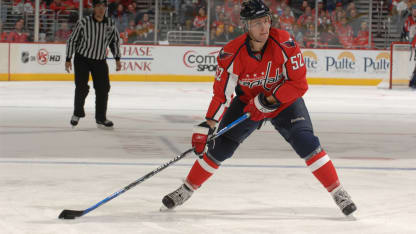Earlier this season, we posted Alex Ovechkin](https://www.nhl.com/capitals/news/early-times-of-the-great-eight/c-311761890) and another Nicklas Backstrom](https://www.nhl.com/capitals/news/backstrom-takes-center-stage/c-313921356). In the process of crafting those stories and talking to the subjects themselves and many others, we were reminded of how exciting and thrilling the 2007-08 NHL season was in these parts.
Time CAPSule - Rebuilding The Blueline
Addition of Poti, blossoming of Green go long way in fueling Caps' 24-point improvement and first playoff berth in five years



















